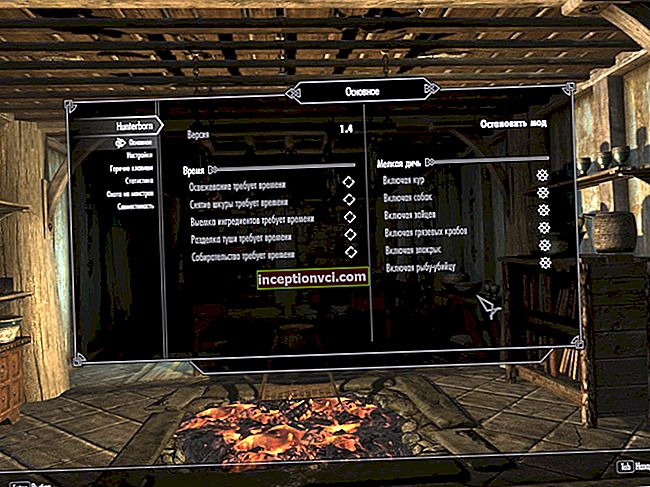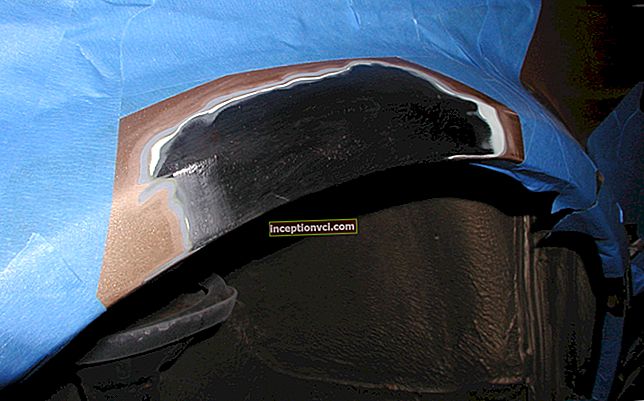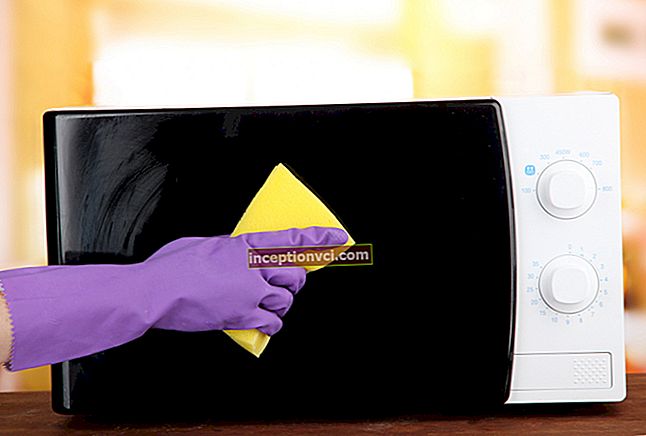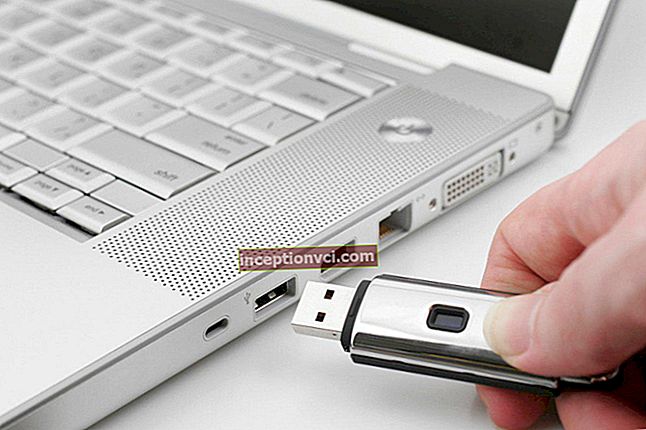Test review of Nokia 515.
More than six years have passed since Apple devices discovered the new format of mobile communication devices. This period, according to modern standards of technological progress, is, of course, quite long, but from the point of view of human life, this is, in fact, only a vaguely remembered period between birth and the beginning of school life. Therefore, there is nothing surprising in the fact that many far from young people will not master the touch interface of smartphones in any way. Unfortunately for them, the search for an attractive push-button phone usually ends in failure. The assortment of well-known manufacturers with such devices is rarely replenished and usually includes phones with a cheap appearance, which obviously will not add solidity to their owner. Naturally, luxury devices of the Vertu class are not taken into account in this context. One of the last push-button phones, which can be called a luxury one, is Blackberry Q5, but still this is a product of a completely different class, since it is characterized by the presence of a touch screen, and its keyboard is not a digital one, but a QWERTY.

At the end of last summer, Nokia resolved this problem by presenting its Nokia 515 phone to the general public. The device boasts a strict and solid appearance - a metal body, a shock-resistant screen with second generation Gorilla Glass, a consistent color palette that implies the presence of only classic colors - black (Nokia 515 Dual Sim Black) and white (Nokia 515 Dual Sim White). With all this, it is characterized by the presence of the Series 40 software platform, which is well known to many fans of previous models.
Equipment
The Nokia 515, like the company's more expensive phones, comes in a blue lacquered cardboard box. However, unlike them, there is no picture of the phone on the packaging. In addition to the device itself, the box contains a battery, instructions, a warranty brochure, a USB network adapter, a tool for removing the back panel and a wired headset. In general, only a paper clip is knocked out of the standard configuration, the usefulness of which will be mentioned separately.

Appearance
Nokia 515 is the successor of the 6,000th business series popular a few years ago, both from the internal (the same S40 platform) and from the external point of view (strict business style is the main design criterion in this case).
According to the developers themselves, the phone is made with the maximum possible use of aluminum. The front panel is divided into two parts. The upper one is occupied by a screen, which is covered by a second-generation Corning Gorilla Glass protective glass (many smartphones of the luxury segment are equipped with such glass - for example, the same aluminum Lenovo K900). If you look at the phone from a right angle, the manufacturer's logo is almost invisible. The reason for this is the casing manufacturing technology, in which the Nokia logo is obscured by sand during processing. As a result, it retains the color of polished aluminum. The keypad of the phone occupies a smaller part of the front panel, but given the fact that the buttons are very tightly located, they are characterized by rather large sizes. The buttons are made of transparent plastic, the symbols are applied on the inside, which completely eliminates the risk of abrasion. For the convenience of blind dialing, button 5 has bumps on both sides. The brightness of the keyboard backlight is quite high. It is characterized by an even distribution over almost the entire area, only the corners of the buttons remain slightly darkened.

The back panel and sides of Nokia 515 are made of a solid aluminum sheet. In the center is the camera lens, and just above it is the flash.At the bottom of the back cover there is a plastic insert surrounded by metal. It is necessary for the antenna to function properly. The company's designers call this solution a pocket. This pocket looks organic and almost invisible. Being embedded in a monolithic panel, it does not form unnecessary gaps, which looks both reliable and attractive. Rear speaker holes are located above the pocket. Another pocket is located on the top edge of the phone. It also houses a microUSB connector and a 3.5 mm headset jack.

There is a paper clip slot on the bottom edge. It is designed to remove the back cover. However, when removing the cover using this clip, you should be extremely careful - one wrong movement will leave a noticeable shiny scratch on the case (especially for the model with a black case). Taking this into account, it is better to remove the cover manually, since the risk of breakage of metal latches is practically zero, and using a metal clip to remove the cover is fraught with spoiled appearance of the phone.
On the right side of the phone, at the top of it, there is a volume control swing. It is characterized by a short, clear stroke and responds to each press with a subtle click.
If you remove the back cover, then under it you can see two slots for microSIM cards. The first (main) slot is not regularly accessed, as it is blocked by the battery. In addition, the SIM-card sits in it very tightly and it takes some time to replace it. The second slot is perpendicular to the first. Its design is such that it allows you to replace the SIM card very quickly. In addition, it is also spring-loaded, which reduces all the manipulation of changing the card to a few simple movements. It is worth paying attention to the fact that the second SIM-card can work only if the first card is installed in the corresponding slot. Just below the second SIM-card slot, there is a slot for a microSD memory card. It is not equipped with a spring, but memory cards of this format usually have a special protrusion for which they can be easily picked up and removed. The rear speaker and antenna module are located even lower.
In general, the build quality of Nokia 515 can be called excellent - the phone's keys have a clear and identical stroke, no gaps, backlash or squeaks are observed when trying to bend the device.
Screen
The phone screen is covered with a glass plate, which has a mirror-smooth and slightly convex surface with a good anti-glare effect. The reflection in the screen is slightly tripled, which proves the presence of an air gap between the outer glass and the surface of the matrix.
The minimum brightness value is 94 cd / m2, and the maximum is 300 cd / m2. The maximum brightness level is not very high, but readability in bright ambient light is good enough. In general, the minimum brightness level is too large, however, for a phone whose brightness level setting is hidden far in the menu, a certain excess is quite acceptable, since such a minimum brightness level will allow you to comfortably use the device in a fairly wide range of ambient lighting. At a reduced brightness level, there is practically no backlight modulation, so there is no screen flickering either.
Nokia 515 is characterized by a TN matrix. The display has quite good viewing angles in the vertical direction, however, with the slightest deviations to the right, light shades are inverted, and with deviations to the left, dark ones. The uniformity of the black field at a perpendicular view is good, but with small deviations, the black field is rather highlighted. The contrast is on the middle level - its value is 860: 1. The color gamut is less than sRGB.
The advantages of the screen include durable external glass, good anti-reflective properties and good information content in bright ambient light.Also, an undoubted advantage is the absence of flickering at a reduced brightness level, which is rare in this class of phones. The disadvantages are small viewing angles and poor color balance.
Operating system
The Nokia 515 is based on the Series 40 6th edition Feature Pack 1 platform, which is characterized by fast and stable performance. Compared to the fifth generation platform, which was installed in the Nokia 6500 and other phones, the sixth version has some changes. Among them - a browser based on the free engine for displaying web pages WebKit (with support for HTML 4.01, Ajax, CSS2 and JavaScript 1.5) and the built-in flash player Flash Lite 3. But more noticeable to the user will certainly be the ability to update the firmware via wireless communication.
Thanks to the Active Standby program, the user has the opportunity to completely fill the desktop with various widgets. They also include various notifications that the Nokia 6500 lacked. Navigating the desktop is done using the Up and Down buttons, while the Left and Right buttons are designed to quickly launch applications (by default - New message and Calendar, respectively).
One of the notable points is the presence of several applications of Internet services at once - Facebook, Twitter, YouTube. Accordingly, the address book has expanded, to which you can already add not only the number and email address, but also the contact's profile on social networks. The user has the ability to rearrange the menu items in a convenient order, but there is no way to delete individual items. The assignment of function keys remains traditional for Nokia phones: the center key activates the Main menu or the Select function, right - Back, left - Context menu. In general, we can safely say that users who are accustomed to the interface of the classic models of the Finnish company will master the Nokia 515 without any problems.
Synchronization of the phone with a personal computer still causes difficulties, since today the Nokia PC Suite 515 model does not officially support the program, although some users connected it to a PC in modem mode. It was not possible to do this in test tests, but as an external drive, the phone connects to the PC instantly.
Connection quality
Nokia 515 has two loudspeakers, which are characterized by a decent headroom. During a conversation, the voice of the interlocutor is transmitted stably and clearly. Unfortunately, simultaneous operation of two SIM-cards is supported only in standby mode.
Camera
The Nokia 515 comes with a 5MP rear camera. It was manufactured using the Extended Depth of Field (EDoF) technology. Due to the absence of delays associated with focusing, the response time of such cameras is much shorter than that of conventional cameras.
The image quality of this camera is average. At first glance, the images are processed well, but upon closer examination, software processing factors become noticeable: noise reduction, interpolation, sharping. Backgrounds are not worked out well enough, foregrounds are not bad, and even medium ones are still satisfactory, but in the background you can notice a significant drop in clarity and detail. The phone flash only makes the situation worse, as it is very weak. Most likely, the camera sensor does not match the capabilities of the optics, which cannot provide high details. Ripples in some details in the background suggest significant interpolation of images. A significant contribution to this situation is also brought by strong noises, which are not very effectively hidden by the noise control. As a result, all these moments throw the camera to the level of budget smartphones. In general, the camera is only suitable for the most basic tasks when taking general shots.
The Nokia 515 is also capable of shooting video files with an extension of 320x240 at 30 frames per second (recording format - MPEG-4 Visual (Simple @ L4a) BVOP).The resolution of video clips is rather low, so they are only suitable for sending in MMS-messages.
Battery life
After disconnecting the phone from the mains for the next four days, it worked a total of six hours in voice recorder mode, four hours in the mode of using applications and games, and about half an hour in making calls. Such results, given the fairly saturated mode of use, against the background of the battery life of modern smartphones, can be called outstanding. But even in comparison with related models from the past, Nokia 515 looks very good. It takes about three hours to fully charge the phone using a standard AC adapter. It is also possible to charge from a computer via a USB connector.
Final impressions
In terms of the combination of its characteristics and appearance, Nokia 515 has practically no competitors on the market of mobile devices today. One can only recall the popular S5610 model of the direct competitor of the Finnish company - the Samsung concern. Of course, the quality of the captured photo and video files could be improved, and the Internet functionality of the device could be expanded with a Wi-Fi module. However, given the positioning of the model, such claims to its capabilities hardly seem to be truly justified.









